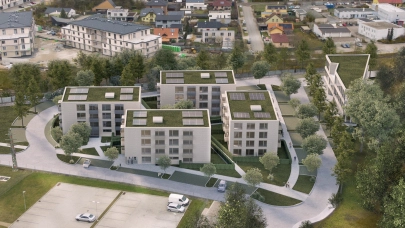
Cushman & Wakefield summed up the first half of 2021 on the commercial real estate market in the CEE region. The investment volume at the end of the first half of the year amounts to €3.7 billion and is nearly 25% lower than in the same period in 2020.
There was a renewed sense of momentum in Q2 2021: increased engagement between buyers and sellers; the launch of new marketing processes and increasing travel in CEE countries by European investors. Taken together, this suggests more transactions are to come which will be completed in late 2021 and represent a return to more usual market volumes.
„The industrial sector remains the main focus of activity and the current activity could soon translate into new pricing benchmarks. The office sector is also showing signs of increased activity and interest in other sectors such as retail and multifamily is visible” says Jeff Alson, CEE Partner, Capital Markets Group, Cushman & Wakefield.
Poland
Demand from European and global investors has returned to Poland - for core products (both long lease industrial and office). Once again there is fierce competition for deals in these sectors. The gap in pricing with less core property remains but here too there is selective demand for assets, particularly in Warsaw.
Czech Republic
After a cautious period, investors have again become optimistic that the economy is going to revive - there is accumulated unspent capital ready to deploy on the market. However, transaction activity in the Czech Republic remains low - there is a shortage of suitable properties for sale, partially due to subdued development activity across all sectors. There is a mismatch between what the capital is targeting and what is available. However, the low level of new development also has some benefits – existing projects face limited competition, so vacancy levels remain stable and rents are witnessing selective growth. Western investors are primarily interested in logistics and rental residential projects. They typically have a very clear vision of what they want to buy, so finalising deals is not easy as their demand is not satisfied by the available offers. For the same reasons, if a deal does happen, it is usually at record-breaking price levels.
Logistics properties are a favourite among investors, with almost no vacancies and rents growing rapidly. They are attracting a variety of investor types, pushing yields to new lows. Most of the transactional activity is in the retail sector, where properties are available for sale. Retail buyers are usually local or regional, but western investors are relooking at this sector and we expect them to return in the coming years. There are very few office buildings for sale and due to the uncertainties surrounding home office, office buildings are now often picked by local rather than western investors. Residential for rent is a new and untested sector, but we do expect the first major, trend-setting transactions to happen this year which will be finalised by western players with a low cost of capital.
The total expected amount of investment in 2021 should reach two billion euros, which will represent an increase of 60% on last year and 70% on the five-year average.
Hungary
As elsewhere, interest in logistics opportunities is particularly competitive, with domestic and international investors scrambling to build substantive portfolios quickly; the challenge here is the lack of available stock. Hungarian developers are turning their attention to this under-developed sector and are building substantive land banks to match their ambitions.
Competition is also strong for centrally located, good quality office stock in particular – with several transactions underway. First-generation assets are more challenging, particularly those of scale or where the value-add is less obvious.
Even retail activity progresses for the right product, with strong demand for strip malls, well covenanted retail warehouses and supermarkets in evidence.
The domestic funds continue to strengthen, consolidating liquidity at home but also expanding into other CE markets and beyond.
Slovakia
In H1 2021, investment activity drove ahead, nearly reaching the volumes for the whole of 2020. With transactions closed across all asset classes, we expect the trend to continue in the second half of the year. The industrial and office segments may see some downward pressure on yields for core assets – a trend also driven by the limited availability of institutional product. The food retail assets sector is also picking up its pace of investment, as are retail parks where we expect a number of deals to be concluded. Given the relatively small size of such assets, they will have a smaller impact on the expected year-end total investment volumes.
Romania
Market liquidity remained impressively strong throughout the most difficult phases of the pandemic in 2020 and it has also been healthy in H1 2021. Romania still has some of the most attractive yields in the region, and they are forecasted to remain stable this year for standard properties, while compression is expected for premium properties in landmark locations that are attracting more potential buyers.



